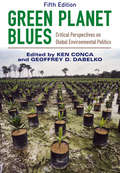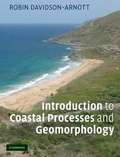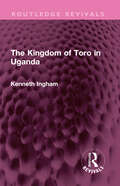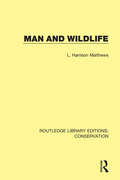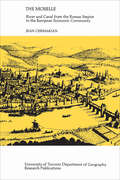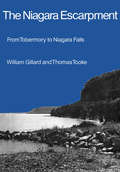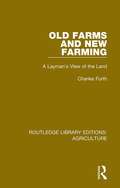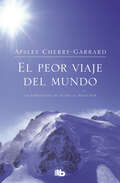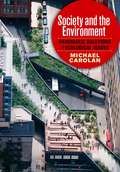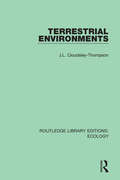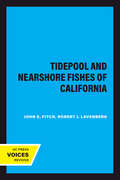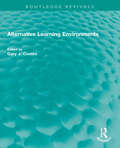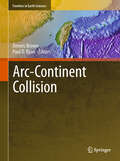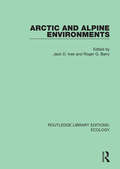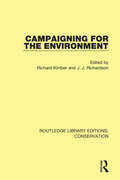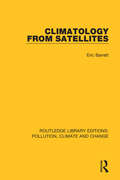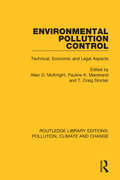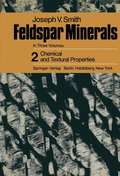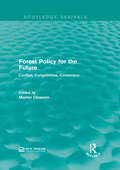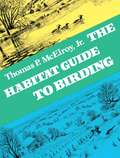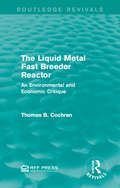- Table View
- List View
Green Planet Blues
by Geoffrey D. Dabelko Edited by Ken ConcaRevised and updated throughout, this unique anthology examines global environmental politics from a range of perspectives#151;contemporary and classic, activist and scholarly#151;and reflects voices of the powerless and powerful. Paradigms of sustainability, environmental security, and ecological justice illustrate the many ways environmental problems and their solutions are framed in contemporary international debates about climate, water, forests, toxics, energy, food, biodiversity, and other environmental challenges of the twenty-first century. Organized thematically, the selections offer a truly global scope. Seventeen new readings discuss climate justice, environmental peacebuilding, globalization, land grabs, corporate environmentalism, climate adaptation, gender, disaster risk, resilience, and the future of global environmental politics in the wake of the #147;Rio+20” global summit of 2012. This book stresses the underlying questions of power, interests, authority, and legitimacy that shape environmental debates, and it provides readers with a global range of perspectives on the critical challenges facing the planet and its people.
An Introduction to Coastal Processes and Geomorphology
by Robin Davidson-ArnottWritten for undergraduate students studying coastal geomorphology, this is the complete guide to the processes at work on our coastlines and the features we see in coastal systems across the world. Accessible to students from a range of disciplines, the quantitative approach of this book helps to build a solid understanding of wave and current processes that shape coastlines. The resulting processes of erosion, transport and deposition and the features they create are clearly explained, with over 400 illustrations and photographs. From sandy beaches to coral reefs, the major coastal features are related to contemporary processes and to sea-level changes over the past 25,000 years. Key equations describing or predicting measurements from instruments used to map these processes are all presented in this wide-ranging overview. Davidson-Arnott completes this teaching package with online material that brings the subject to life, including videos of coastal processes and virtual field trips.
The Kingdom of Toro in Uganda (Routledge Revivals)
by Kenneth InghamFirst published in 1975, The Kingdom of Toro in Uganda describes the foundation of the Toro kingdom in the nineteenth century by the rebel prince Kaboyo, and investigates how Kasagama, Kaboyo’s grandson, was able to recreate, with little local support, a kingdom far more extensive than Kaboyo had ever envisaged. His personal authority was established by his insistence that its root were traditional, thus satisfying the requirements of ‘indirect rules’ at a time when this ill-defined concept served both as the shibboleth and the escape clause for an overstretched British colonial administration. Although Kasagama’s son, Rukidi, was able to combine authority with personal popularity and to take advantage of colonial innovations without losing control of his kingdom, the ending of colonial rule brought an end to Toro as he knew it. In an independent Uganda the particularism stressed by Toro’s rulers could not survive. This book will be of interest to students of history, colonialism, African studies and ethnic studies.
Man and Wildlife (Routledge Library Editions: Conservation #4)
by L. Harrison MatthewsOriginally published in 1975, Man and Wildlife traces the evolution of man from pre-hominid ancestors, and his influence in modifying the environment and its flora and fauna as technical knowledge grew. The development of civilization allowed man to dominate the environment; its advance led to the discovery and exploitation of the world’s resources. In spite of all the discoveries of science, man’s battle with the adverse forces of wildlife remain un-won and seems likely to stay so for the foreseeable future. The book traces the beginnings of environmental consciousness in the decades preceding its publication. It examines the extent of the human devastation of the environment, which has increased with rapid expansion of the world’s human population, and the belated efforts to halt the destruction and help wildlife preservation.
The Moselle: River and Canal from the Roman Empire to the European Economic Community
by Jean CermakianThe Moselle has been one of the main arteries of European Communication and transportation for centuries. The Romans used it as a main thoroughfare from southern to northern Europe and also began the improvements to its navigation that have continued intermittently through the industrial revolution to the present day. Professor Cermakian focuses on the historical, political, and geographical factors in the use and canalization of this international river – a focus that is derived from his interest in the details of standardizing transport networks and policy as an important part of 'European integration,' which he sees both as a long historical movement and as a present endeavour under EEC. The book offers a history of the political economy of an important river, a symbol for many of the spirit of Europe.(University of Toronto Department of Geography Research Publications 14)
The Niagara Escarpment: From Tobermory to Niagara Falls
by William H. Gillard Thomas R. TookeThis book provides an informal history and tour of the Niagara Escarpment, the backbone of Ontario and one of Canada's natural wonders. Stretching from Tobermory at the tip of the Bruce Peninsula to Niagara Falls, the escarpment exhibits a wide diversity of landscape, people, and industry, in the present and in the past. The authors have divided it into three major regions. the rugged northern region which retains much of its primitive beauty serves primarily as a haven for tourists and summer residents, although it was once a centre for fishing and lumbering. Change has come also to the middle area. Its waterpower once made it an industrial region, but today the land from Meaford to Dundas is largely agricultural. The south, so rich in the early history of Canada, is heavily settled and industrialized. Over 80 photographs, taken by William H. Gillard, who himself lives on 'the mountain,' capture the various facets of the region. The rugged cliffs of the Bruce Peninsula contrast with the pastoral lands beneath Mount Nemo; the neatly trimmed harbour at Tobermory counterpoints the Dundas swamp of Coote's Paradise. We see the interplay of industry and agriculture, from Owen Sound's grain elevators through Hamilton's blast furnaces to Jordan's vineyards, and recreation and culture, from tourist landmarks through Hockley Hills skiing to the museums of history and art. The text provides entertaining glimpses of some of the people and some of the events in the history of settlement and growth, proceeding from town to town, north to south. This readable book is the first to deal with the landscape and history of the entire Niagara Escarpment. It is a useful guide to one of the most interesting and historic areas of Canada.
Old Farms and New Farming: A Layman's View of the Land (Routledge Library Editions: Agriculture #14)
by Charles FurthFirst published in 1975. This title presents a series of vivid insights and images, explaining the problems in the field, the machinery and techniques, science and economics, and what it means to the farm worker. The book depicts and explains the sophisticated techniques with which the farmer tackles the problems of soil and season, within the beautiful and ancient rhythm of lambing and haymaking, pasture and dairy, seed time and harvest. This title will be of great interest to not only students of agriculture, but those interested in the history of farming.
El peor viaje del mundo: La expedición de Scott al Polo Sur
by Apsley Cherry-GarrardLas memorias de los tres años de expedición del capitán Scott al Polo Sur narradas por Apsley Cherry-Garrard, quien sobrevivió a las extremas y duras condiciones. La exploración polar es la forma más cruel y solitaria imaginable. El explorador británico Apsley Cherry-Garrard nos lo cuenta a través de sus vivencias en la expedición del capitán Scott al Polo Sur (1910- 1913), en la que éste y tres de sus hombres hallaron la muerte. Esa expedición estuvo marcada por el infortunio desde el comienzo, cuando, en una etapa previa, Cherry-Garrard y otros dos hombres, al borde de la congelación y la locura, consideraron entonces la posibilidad de fenecer. El itinerario hacia el Polo, más terrible aún, se vio además ensombrecido por la noticia de que el noruego Roald Amundsen se les había adelantado por solo unas semanas. A partir de las anotaciones que dejó Scott y, sobre todo, de su propia experiencia, Cherry-Garrard reconstruye en este libro aquellos tres años de penalidades y heroísmo.
Society and the Environment
by Michael CarolanTalking about global environmental issues need not be an exercise in gloom, doom, and individual sacrifice--as Michael Carolan ably demonstrates in this introduction to environmental sociology. Society and the Environment examines today's environmental controversies within a socio-organizational context. After outlining the contours of "pragmatic environmentalism," Carolan explores the material world: air, water, biodiversity, and trash. He considers the pressures that exist where ecology and society collide, such as population growth and its associated increased demands for food and energy. Finally, he drills into the social/structural dynamics--including political economy and the international legal system--that create ongoing momentum for environmental ills. This interdisciplinary text features a three-part structure in each chapter that covers "fast facts" about the issue at hand, examines its wide-ranging implications, and offers pragmatic consideration of possible real-world solutions. Bolstering the analysis, a variety of boxes highlight relevant case studies as well as the value judgments which lurk everywhere in talk about environmental phenomena. Discussion questions and key terms enhance the text's usefulness, making Society and the Environment the perfect learning tool for courses on environmental sociology.
Society and the Environment
by Michael CarolanTalking about global environmental issues need not be an exercise in gloom, doom, and individual sacrifice-as Michael Carolan ably demonstrates in this introduction to environmental sociology.Society and the Environment examines today's environmental controversies within a socio-organizational context. After outlining the contours of "pragmatic environmentalism," Carolan explores the material world: air, water, biodiversity, and trash. He considers the pressures that exist where ecology and society collide, such as population growth and its associated increased demands for food and energy. Finally, he drills into the social/structural dynamics-including political economy and the international legal system-that create ongoing momentum for environmental ills.This interdisciplinary text features a three-part structure in each chapter that covers "fast facts" about the issue at hand, examines its wide-ranging implications, and offers pragmatic consideration of possible real-world solutions. Bolstering the analysis, a variety of boxes highlight relevant case studies as well as the value judgments which lurk everywhere in talk about environmental phenomena. Discussion questions and key terms enhance the text's usefulness, making Society and the Environment the perfect learning tool for courses on environmental sociology.
Soil mechanics
by David Muir WoodThis 2009 book teaches the principles of soil mechanics to undergraduates, along with other properties of engineering materials, to which the students are exposed simultaneously. Using the critical state method of soil mechanics to study the mechanical behavior of soils requires the student to consider density alongside effective stresses, permitting the unification of deformation and strength characteristics. This unification aids the understanding of soil mechanics. This book explores a one-dimensional theme for the presentation of many of the key concepts of soil mechanics - density, stress, stiffness, strength, and fluid flow - and includes a chapter on the analysis of one-dimensional consolidation, which fits nicely with the theme of the book. It also presents some theoretical analyses of soil-structure interaction, which can be analyzed using essentially one-dimensional governing equations. Examples are given at the end of most chapters, and suggestions for laboratory exercises or demonstrations are given.
Terrestrial Environments (Routledge Library Editions: Ecology #16)
by J.L. Cloudsley-ThompsonOriginally published in 1975 Terrestrial Environments covers the zoogeography and ecology of the main terrestrial environments of the world, including fresh water habitats with emphasis on their fauna. The book also explores climate and vegetation in so far as they affect animal life. Finally, the selective influence of the environment on its fauna is discussed and, conversely, the influence of regulation, a synthesis of these interrelations. Morphological adaptations of the animals inhabiting various types of terrestrial environments are considered in relation to locomotion, feeding, and escape from enemies. Physiological adaptations are also mentioned briefly, and the adaptative importunate of diurnal and seasonal rhythms is stressed.
Tidepool and Nearshore Fishes of California
by John E. Fitch Robert J. LavenbergThis title is part of UC Press's Voices Revived program, which commemorates University of California Press’s mission to seek out and cultivate the brightest minds and give them voice, reach, and impact. Drawing on a backlist dating to 1893, Voices Revived makes high-quality, peer-reviewed scholarship accessible once again using print-on-demand technology. This title was originally published in 1975.This title is part of UC Press's Voices Revived program, which commemorates University of California Press’s mission to seek out and cultivate the brightest minds and give them voice, reach, and impact. Drawing on a backlist dating to 1893, Voices Revived</DIV
Volume 5: Maritime Communities and Vegetation of Open Habitats
by J. S. RodwellBritish Plant Communities is the first systematic and comprehensive account of the vegetation types of this country. It covers all natural, semi-natural and major artificial habitats in Great Britain (but not Northern Ireland), representing the fruits of fifteen years of research by leading plant ecologists. The book breaks new ground in wedding the rigorous interest in the classification of plant communities that has characterized Continental phytosociology with the deep concern traditional in Great Britain to understand how vegetation works. The published volumes have been greeted with universal acclaim, and the series has become firmly established as a framework for a wide variety of teaching, research and management activities in ecology, conservation and land-use planning.
Alternative Learning Environments (Routledge Revivals)
by Gary J. CoatesOriginally published in 1974, this volume presents viable alternatives to traditional attitudes and practices in environmental design and education. It contains 29 selections that reflect the thought and actions of leaders from many diverse disciplines and professions. Architects, landscape architects, urban planners, teachers and administrators, psychologists and social theorists address themselves to controversial and important issues facing our post-industrial society. The range of subjects explored in the volume is far-reaching: • Environmental education in which the art of planning and designing itself becomes the curriculum • Advocacy planning and community participation in bo9th educational and design decision making • Alternative educational institutions, ranging from community-centered schools and mobile schools to non-school learning networks that distribute the learning activity throughout the fabric of the city and the lifetime of the learner. • New developments in systematic design methods and evaluation research that promise to make the design process more public and responsive to the user-client.
Arc-Continent Collision (Frontiers in Earth Sciences)
by Dennis Brown Paul D. RyanArc-continent collision has been one of the important tectonic processes in the formation of mountain belts throughout geological time, and it continues to be so today along tectonically active plate boundaries such as those in the SW Pacific or the Caribbean. Arc-continent collision is thought to have been one of the most important process involved in the growth of the continental crust over geological time, and may also play an important role in its recycling back into the mantle via subduction. Understanding the geological processes that take place during arc-continent collision is therefore of importance for our understanding of how collisional orogens evolve and how the continental crust grows or is destroyed. Furthermore, zones of arc-continent collision are producers of much of the worlds primary economic wealth in the form of minerals, so understanding the processes that take place during these tectonic events is of importance in modeling how this mineral wealth is formed and preserved. This book brings together seventeen papers that are dedicated to the investigation of the tectonic processes that take place during arc-continent collision. It is divided into four sections that deal firstly with the main players involved in any arc-continent collision; the continental margin, the subduction zone, and finally the volcanic arc and its mineral deposits. The second section presents eight examples of arc-continent collisions that range from being currently active through to Palaeoproterozoic in age. The third section contains two papers, one that deals with the obduction of large-slab ophiolites and a second that presents a wide range of physical models of arc-continent collision. The fourth section brings everything that comes before together into a discussion of the processes of arc-continent collision.
Arctic and Alpine Environments (Routledge Library Editions: Ecology #6)
by Jack D. Ives; Roger G. BarryOriginally published in 1974, Arctic and Alpine Environments examines, the relatively simple ecosystems of arctic and alpine lands that still occupy extensive areas little disturbed by modern technology. The book argues that there is a necessity for carefully controlled development of the resources of these regions and suggests that there is a risk of irreversible disturbance without full understanding of these regions. This book provides a detailed documentation of cold-stressed arctic and alpine terrestrial environments and systematically deals with the present and past physical environment – climate, hydrology and glaciology; biota – treeline, vegetation, vertebrate zoology, and historical biogeography; abiotic processes – geomorphological and pedological and the role of man – bioclimatology, archaeology and technological impact, including radioecology. The book will appeal to academics and students of environmental and biological science, as well as providing a significant source for conservationists’, government agencies and industrial organizations.
Campaigning for the Environment (Routledge Library Editions: Conservation #8)
by Richard Kimber Jeremy RichardsonOriginally published in 1974 Campaigning for the Environment addresses the issue of the environmental lobby. Using seven case-studies from the time of publication, the book covers the important aspects of environmental campaigning, where the environment has been threatened and where pressure groups have been formed to defend it. The book discusses the political problems of protecting and improving the environment, and states that each campaign involves taking on major sections of the political system. Despite having been published over 40 years ago, the commentary of the book, and the analysis in the case studies is still as relevant today as it was then. This book will be of interest to academics working in the field of environment and sustainability, conservation and political studies.
Climatology from Satellites
by Eric BarrettOriginally published in 1974, was a pioneering study which summarized, within the pre-existing framework of atmospheric knowledge, the more significant findings that emerged from the first decade of climatological analyses of meteorological satellite data. It shows how these data complement and extend the traditional coverage of climatology. The book draws together in one volume research findings which were not previously available in book form and which significantly improve the understanding of climate, especially in regions that were conventionally data-remote.
Environmental Pollution Control: Technical, Economic and Legal Aspects
by Allan D. McKnight Pauline K. Marstrand T. Craig SinclairOriginally published in 1974 this volume brings together contributions from lawyers, a nuclear physicist, a landscape architect, biologist, engineers and a former Inspector of the International Atomic Energy Agency. It covers technical and legal information on air, water, sea, land and noise pollution and provides a comprehensive guide, summary and introduction to the journal literature in separate but relevant disciplines. All of the contributors have specialised in studies in pollution control and contributed to the debate on use and management of the environment.
Everybody Needs a Rock
by Byrd BaylorBaylor provides ten rules for finding a rock. "Not just any rock, Baylor is careful to note, but 'a special rock that you find yourself and keep as long as you can--maybe forever."
Feldspar Minerals: 2 Chemical and Textural Properties
by J.V. Smith33 14. 3. 5 REE between Plagioclase and Aqueous Fluid 0 Cullers et al. (1973) measured the distribution of REE at 850 C and 750 bars pressure between a natural plagioclase, An , and gaseous water. The rare earths 65 favored the plagioclase by a factor which varies from about 25 for Ce to 10 for Lu. Data were also obtained for forsterite, diopside, enstatite and two rhyolite glasses, on the one hand, and water on the other hand, thereby permitting estimation of the partition coefficients between all pairs of phases. 14. 4 Chemical Substitution in Natural Feldspars 14. 4. 1 Introduction It is quite impracticable to give all the data on chemical substitution in natural feldspars: indeed many of the details are significant only to some particular pegmatite or rock body. As far as possible, emphasis is placed on features of general interest to crystal chemists and to petrologists. Ironically the well established features can be described more easily than the uncertain ones, and unfortunately it is necessary to use valuable space on data of dubious value. The bibliography is fairly complete, but it was impracticable to locate all data, especially those in obscure journals. Each reference is followed by a list of the elements referred to in the paper, thereby permitting a reader to compile a fairly compre hensive set of references on any chosen element. Not all papers are mentioned in the text. The book on Geochemistry and Mineralogy of Rare Elements, etc.
Forest Policy for the Future: Conflict, Compromise, Consensus (Routledge Revivals)
by Marion ClawsonThe use and management of forests in the United States, especially the public owned ones, have been the focus of considerable controversy. First published in 1974, this volume, a collection of papers originally delivered at the RFF Forest Policy Forum, explores alternative forest management programmes to see what is biologically, economically, socially and politically possible. This title is a valuable resource for students interested in environmental studies, as well as for policy makers.
The Habitat Guide to Birding
by Thomas P. McelroyThe United States is blessed with birds, a vast and richly varied population that changes considerably as the habitat changes from forest, to meadow, to marsh. As Thomas P. McElroy puts it in this unique birding guide, "Birds are everywhere . . . and this fact alone provides innumerable ecological equations to challenge the most curious of intellects." This is not a guide that answers only "What bird is it? but the deeper, more fascinating questions such as these: Why is it there? How does it survive? How does it contribute to the ecology of its surroundings? The answers to these questions, and many more, carry the birdwatcher well beyond lists and into a more involving, more satisfying means of observing nature.
The Liquid Metal Fast Breeder Reactor: An Environmental and Economic Critique (Routledge Revivals)
by Thomas B. CochranIn this book, Thomas B. Cochran takes a critical look at the economic and environmental arguments which have been made in favour of an early introduction of the liquid metal fast breeder reactor (LMFBR) as a central component of the United States electrical energy system. First published in 1974, Cochran presents LMFBR as having no environmental advantage over light water reactors and the high temperature gas reactor and seriously questions the economic advantages. This title should be a useful for students interested in environment and sustainability studies, and it is a valuable resource for discussions of future energy strategy.
